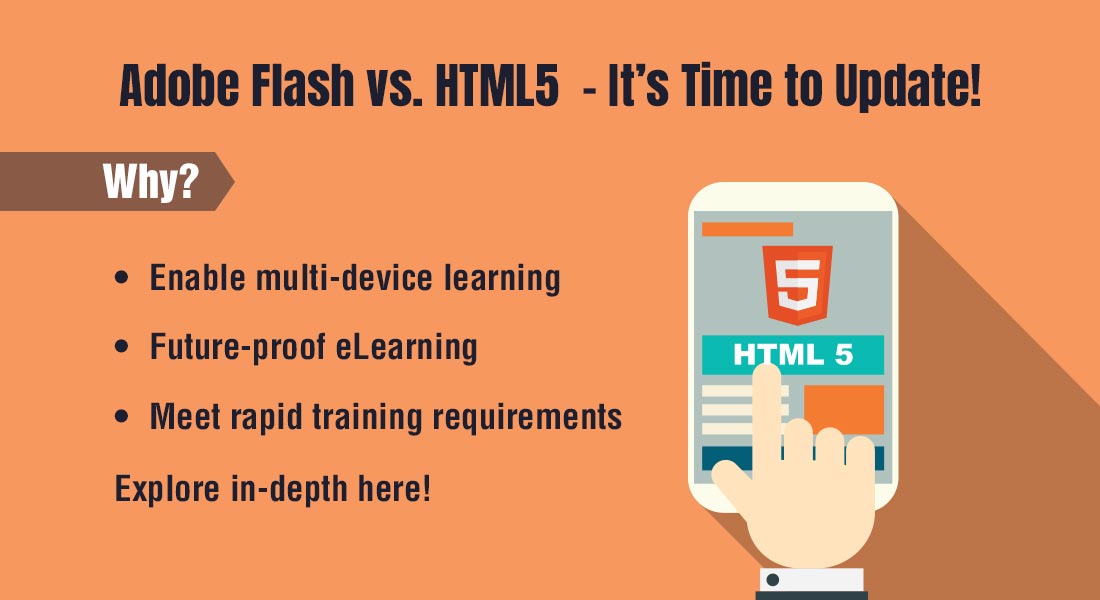HTML5: What’s in it for E-learning

Change is inevitable, and we all know the old adage – survival of the fittest. Thus, with the passage of time, eLearning industry has started to embrace new technology of using HTML5
Initially, for developing an eLearning course, we preferred to use Flash, but of late we are thinking more about HTML5. Let’s see why Flash is losing the battle with this new technology.
Why is Flash losing the battle?
With the rapid proliferation of mobile devices, today’s learners use smartphones and iPads for their learning. Many organizations today implement the BYOD (Bring Your Own Device) policy for their employees. Mobile applications are not as compatible with Flash as they are with HTML5. HTML5 is an open source technology and is compatible with Apple products (such as iPads and iPhones) and other smartphones.
Another important factor that paves the way for this changeis the increased use of mobile learning, The time has come to think of ways of using HTML5 applications, which enable mobility. We can access and view training material whenever, wherever required. It is much easierto deploy web-based applications using HTML5, in quick time. This is not the case with Flash.
HTML5 gives the upper hand, by using a number of applications at one go. Flash does not help you use too much processing and battery backup.Thus, using HTML5 always had an edge for running mobile based applications.
That’s not all: In some areas, Flash garners more muscle power
With HTML5, we have to face the problems of browser compatibility. HTML5 does not support old browsers but supports only new (or latest) browsers used to access an eLearning course, be it Chrome, Explorer, Firefox, and Safari (Apple browser). This is not the case with Flash. For example; if you want to run applications with IE 6 or 7, it is not possible to run seamlessly, as they are old versions of the browser.
With Flash, we can develop enriching interactivities and beautiful graphics. Creating such animations with HTML5 it is not possible, as it lacks efficient tools and it will take considerable time and effort to develop such animations, using coding, with this new technology.
Another area where HTML5 loses the battle heavily is the use of audio (wav. or mp3) and video format (FLV).In HTML5; the regular video formats are not supported that are which is flash supported.
You might be in two minds about moving to HTML5. Keep an eye on the future; we are more into mobile learning where than sitting on a classroom. E-learning professionals should think of using HTML5 for easy deployment of various mobile based applications and accessing courses from different platforms. So, embrace this new emerging technology with full zeal.





